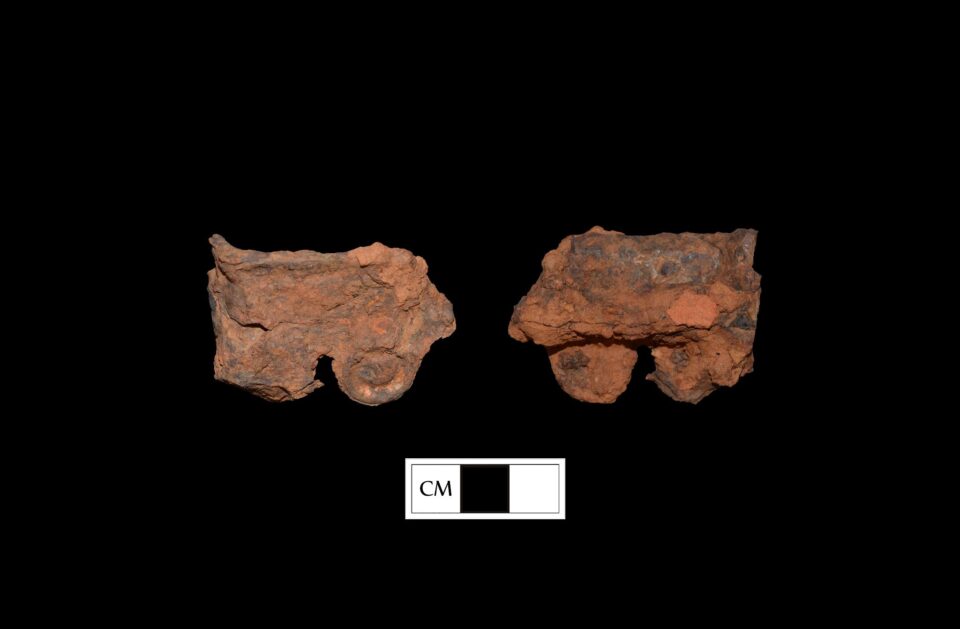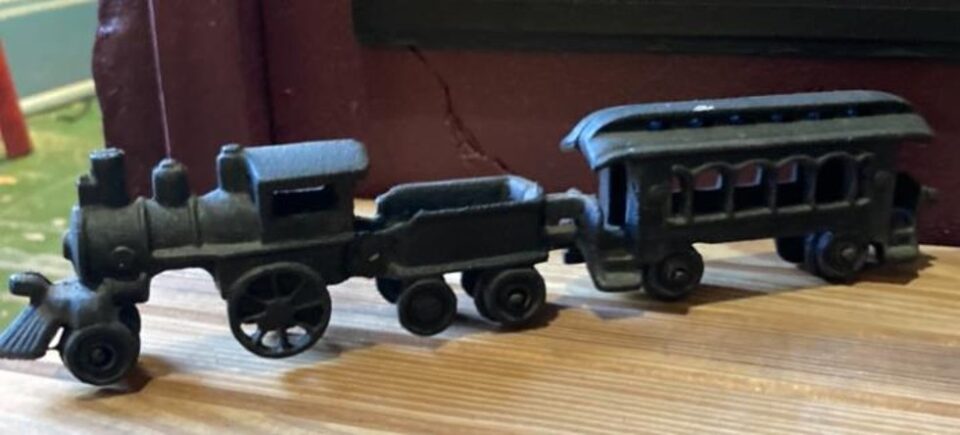Archaeology Blog
Finding Connections with a Poplar Forest Artifact during a Field Trip to the Anne Spencer House
By: Brooks McCabe
During this summer’s excavations at the 1857 Slave Dwelling, Poplar Forest archaeologists unearthed what looked like an indistinguishable iron fragment. After some cleaning, the artifact had recognizable details, leading us to believe that this artifact was once part of a toy train. We researched toy iron trains from the early 20th century online based on the date of other artifacts found within this layer that date to that period. While we found some images that seem to match the fragment we recovered, we did not know that we would soon find a similar type of train in complete form and in person!
Fragment of a toy train (shown above) recovered from recent excavations at Poplar Forest, including a front view (left) and rear view (right) of the toy train artifact.
In late September, Poplar Forest’s Department of Archaeology and Landscapes were given a special tour of the Anne Spencer House and Garden Museum. This Virginia Landmark, listed on the National Register of Historic Places, was once the residence of the famous Harlem Renaissance poet, Anne Spencer, and her family from 1903 until Anne’s death in 1975. In the bedroom of Anne’s son, Chauncey E. Spencer, is an exhibition space that talks about his life as a pioneering African American aviator who helped inspire Harry S. Truman to request the funding needed to train African American pilots and establish the Tuskegee Airmen in World War II. It was an amazing experience to visit this historic home and hear the stories associated with it from the museum’s Executive Director, Shaun Spencer-Hester, Anne’s granddaughter and Chauncey’s daughter. As we visited with Shaun, we saw several things on display that Chauncey had as a child, including this toy iron train.
We believe the fragment that was recovered archaeologically at Poplar Forest is similar to the middle “coal car” shown above in the complete toy train set. The exterior edges, and wheels in particular, seem to be a close match. While we believe that the fragment we recovered outside the 1857 Slave Dwelling is from a toy train, we cannot say with certainty that it is from the same model as the one on display in Chauncey’s room. But, at the very least, it is a close match and further research may help us learn even more about this artifact and the African American residents who lived in this building at Poplar Forest in the early 20th century.
For more information about the Anne Spencer House and Garden Museum, please visit their webpage. Additional information about Chauncey Spencer’s pioneering role in aviation for African American pilots in Virginia and beyond can be found online in a number places, including the National Air and Space Museum. We also had the great fortune to meet Chauncey’s son, Chauncey E. Spencer II, in October during his recent travels through Lynchburg as part of his work with the African Americans in Aviation Traveling Museum as he helps keep this important history alive. Be sure to take advantage of the opportunity to visit the traveling museum if it makes a stop in your community.

